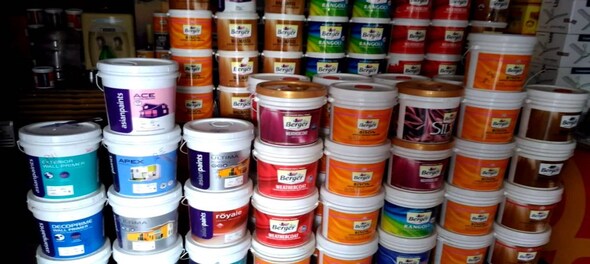
In 1997, Asian Paints was widely regarded as one of the biggest success stories among Indian businesses. Set up in 1942 as a partnership firm by four friends, it had taken on entrenched multinationals as well as local competitors to emerge as India’s largest paints company, almost twice the size of its nearest competitor Goodlass Nerolac.
The families of the four founders, Champaklal Choksey, Chimanlal Choksi, Suryakant Dani and Arvind Vakil, held a majority stake in the firm and till the 1990 they had run it harmoniously.
But through the 1990s as the company expanded beyond India, disputes started emerging between the members. These came to a head after Champaklal died in July 1997 and his son Atul took over as managing director. Not convinced of the company’s future direction, he decided to exit the business. An initial deal with Morgan Stanley and Capital International through DSP-Merrill Lynch fell through after the two foreign institutional investors claimed that they had been misled on the identity of the shareholders from whom they were buying the holdings.
Choksey now negotiated a two-stage deal with ICI Plc, the giant British paints and chemicals group which languished in fourth place in the country’s fast-growing market and was looking for ways to increase its share, to sell his and his associates’ 9.1 percent stake in the company for a consideration of Rs 128.70 crore leaving his family with a tiny 0.4 percent stake in the firm.
In the first stage in August 1997, he sold his stake to Kotak Mahindra Capital Company (KMCC) which brokered the deal and had received a loan from ICI to buy the shares at Rs 347.50 each. KMCC, in turn, sold the shares to ICI.
But the 9 percent stake that ICI bought was of no use since the other three promoters of the company together controlled more than 30 percent. They quickly mounted their defences, first reaching an agreement which prevented them from selling their stakes to any outside party. Ashwin Choksi who was now the company’s new chairman issued a statement on August 21, 1997 calling ICI’s move “an attempt by a multinational rival to acquire a foothold in the company." He also pointed to Foreign Investment Promotion Board (FIPB) guidelines which stated that before government approval could be granted to foreign investors, the board of a company had to support the investment. The company’s vice-chairman, Ashwin Dani announced its decision not to transfer shares to KMCC.
ICI had no intention of getting into a long-draw, and possibly bruising, battle. It called off the deal and months later Kotak sold half of the shares it held to Unit Trust of India, and the other half, to the Choksi, Vakil and Dani families.
The Asian paints saga had a fascinating twist when six years later, in October 2003, Asian Paints emerged as the highest bidder to buy the government’s 9.2 percent stake in ICI, which it was selling as part of its disinvestment efforts. Ironically, it was exactly the same number that ICI had initially acquired in Asian Paints.
A few years later, Asian Paints sold off the ICI shares in the market.
—Sundeep Khanna is a former editor and the co-author of the recently released Azim Premji: The Man Beyond the Billions. Views are personal.
Check out our in-depth Market Coverage, Business News & get real-time Stock Market Updates on CNBC-TV18. Also, Watch our channels CNBC-TV18, CNBC Awaaz and CNBC Bajar Live on-the-go!


'Borrowed' leaders: Congress hits out at AAP for not fielding their own candidates in Punjab
Apr 28, 2024 9:53 PM
EC asks AAP to modify election campaign song and Kejriwal's party is miffed
Apr 28, 2024 9:25 PM

